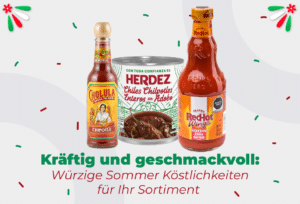Tamales; the ultimate homely dish with Pre-Columbian roots. Traditionally made with a corn-based dough (masa) mixture and filled with various delicious meats, beans, veggies, cheese, and even fruit, wrapped in a banana leaf or corn husk, and then steamed. The exquisite masa becomes firm during the steaming process, which makes them ideal to unwrap and eat on-the-go or as a sit-down meal, topped with your favorite salsa. Making the tamales is an arduous process, that sometimes requires multiple pairs of hands to help make the tasty dish. These reunions held with the sole purpose of making tamales are called “tamalizas” and embody the core essence of the tamal, which is getting friends and family together. Whether it is a party thrown to stuff masa with a filling, or eat the final product with your loved ones, tamales have maintained a strong community substance to them for centuries. Here are some must-haves for your own Tamaliza:
- Maseca Tamal – Corn Flour
- Jalisco – Corn Husk
Tamal History
Archeological evidence arguments the fact that tamales were consumed by ancient Aztec and Mayan cultures. Evidence suggests that tamales were a lot simpler back then. These were made with beans and squash and roasted over an open fire. Once European settlers introduced new ingredients like chicken, pork, olives, raisins, and many others, then tamalesFestivities and Tamales
Tamales have a strong bond with festivities in Mexico, having one of their core values being community and family. They are easy to spot in most festivities that run from November, all the way through May. Even though tamales are eaten during the Day of the Dead, Christmas, Easter, just to name a few. Tamales have been allocated a special festivity in Mexican culture, El Día de la Candelaria or the Feast of Holy Encounter, which is celebrated on the 2nd of February. Candelaria in Mexico has its own special traditions that don’t exist anywhere else, some of which tie back to Aztec times before Christianity even arrived at the Americas. Outside of catholic church services, the most notable characteristic of this holiday is having a big family dinner where a feast of tamales is served. Traditionally, this celebration begins a month earlier on Three King’s day when family and friends usually eat a cake called Rosca de Reyes, which has been baked with a small figurine of baby Jesus inside of it. Whoever finds the baby Jesus figurine in their slice of cake is in charge of hosting the Candelaria festivities in February as well as providing the tamales. Must-haves for your Dia de la Candelaria celebration:- Abuelita – Hot Chocolate
- Nescafé Café de Olla – Coffee
Fillings
Tamales are not only full of quality time spent with friends and family, but appetizing fillings as well! Fillings range from very simple, to incredibly elaborate. Usually, tamales are filled with slow-cooked chicken or pork in a sauce of sorts to give them some moisture. However, veggie tamales are quite popular, and there are vegan options as well, where the lard in the masa gets replaced by vegetable shortening. Fillings also oscillate into the realm of sweetness, which can cause some controversy between fans and doubters of these. Whether you are a fan or not, sweet tamales are here to stay. These sweet tamales are commonly stuffed with fruits, dates and raisins. There are over 4,000 variants of tamales in Mexico, but don’t fret! We have an amazing selection of ready to serve tamales from La Reina de las Tortillas.- Pork Pibil Tamales – Cochinita Pibil or pulled pork shoulder marinated and braised in achiote paste, orange juice, and lime. These delicious tamales will transport you to the Yucatan peninsula with their flavor!
- Chicken Mole Tamales – Mole is a Mexican classic – a thick, dark sauce made with a medley of sweet and spicy chilies, rounded out with bitter chocolate. Served with tender chicken, it’s sublime.
- Rajas with Cheese Tamales – Delicious filling made with fresh Poblano chile, a mild green chile typically used for chiles rellenos, rajas, and crema de poblano.
- Chicken Tinga Tamales – Chicken tinga is a Mexican dish made with shredded chicken in a sauce made from tomatoes, chipotle chilis in adobo, and sliced onions.
- Pork in Salsa Verde Tamales – Pork and green sauce, made with corn dough, pork, and Salsa Verde.
- Vegan Tamales – Tasty vegan tamal filled with chopped tomatoes, zucchini, peppers, onion, guajillo, and arbol chili. No need to worry, no animals harmed in the making of these delights!
- El Yucateco – Achiote, the key ingredient to make Cochinita Pibil and Pastor.
- Doña Maria – Mole, we have a wide range of moles to make the perfect mole filling.
- Herdez – Roasted Salsa Verde, ideal to make Green sauce chicken or pork.
- San Miguel – Cuitlacoche or Corn Truffle, a gourmet vegan option that will leave everyone wanting more.



